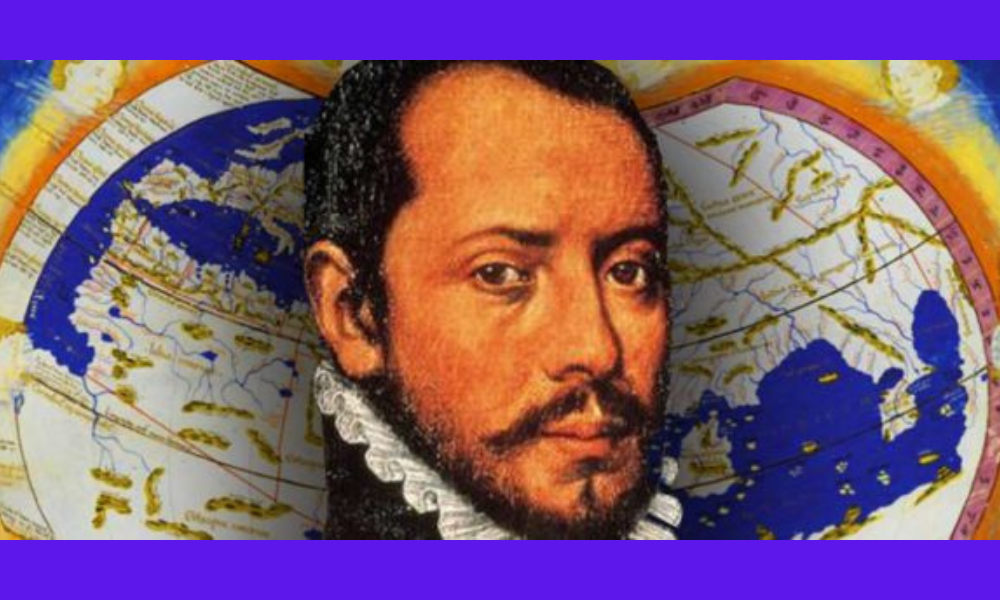Attualità
Area industriale di Livorno, futuro unicorno o rana bollita? parte 3 – Livorno industrial area, future unicorn or boiled frog? part 3

Area industriale di Livorno, futuro unicorno o rana bollita? parte 3
di Marco Andreozzi
Da studente di ingegneria, a un convegno sull’automazione industriale incontrai un collega belga con il quale si comunicava molto bene. Parlava perfettamente l’italiano, che aveva voluto studiare in omaggio al passato degli intensi scambi commerciali ed artistici tra lo stato fiorentino e le sue terre fiamminghe (in storia dell’arte, i Paesi Bassi tutti) nel medioevo e fino al Rinascimento. Proprio durante il XVI secolo gli olandesi, da tempo oltremare, prendono il testimone delle nazioni-guida mercantili d’Europa da una Toscana chiusa nel ‘lago’ Mediterraneo. Singolare testimone è proprio un mercante fiorentino, Francesco Carletti, che al suo rientro in patria pubblicherà un interessantissimo resoconto di viaggio quale primo al mondo a circumnavigare il globo (1594-1602), e senza una flotta propria (più spesso i fiorentini impiegavano vascelli portoghesi).
Infatti, di ritorno verso casa, i “pirati zelandesi” (cit.) assalgono la sua nave presso l’isola di Sant’Elena, poi appartenuta agli stessi neerlandesi per breve tempo, e nota per l’esilio di un imperatore francese di origine toscana (via Corsica). Gli portano via tutto quanto collezionato negli anni, incluso un letto realizzato nelle terre cantonesi dell’impero Ming per il granduca della Toscana medicea. Letto che verrà invece donato alla fiorentina Maria de’ Medici, regina di Francia, allorché nel 1609 il trattato di Anversa poneva fine alle ostilità tra le Sette Province Unite ed indipendenti d’Olanda e l’impero spagnolo. Simbolici segni dei tempi nuovi.
Invero, sul finire del XVI secolo la Toscana avvia riforme importanti, tra cui le Leggi Livornine del 1591-93 (del granduca Ferdinando I), volte a sviluppare in chiave cosmopolita un borgo marinaro di appena cinquecento abitanti per attrarre insediamenti di “mercanti di qualsivoglia Nazione, Levantini, Ponentini, Spagnuoli, Portughesi, Greci, Todeschi et Italiani, Hebrei, Turchi, Mori, Armeni, Persiani et altri”, garantendo libertà di religione, amnistia e protezione dal tribunale dell’Inquisizione. Da qui, la città labronica nel 1609 conta già cinquemila abitanti e per tutto il Seicento è l’unico porto italiano che non conosce crisi. Siamo tuttavia nel ‘lago’ Mediterraneo, e la spedizione del piccolo (pur opulento) granducato già organizzata (unico staterello tra quelli ad ‘autonomia differenziata’ d’Italia) per colonizzare terre in Brasile e nelle ‘Guiane’ è cancellata da Cosimo II de’ Medici. Impossibile intaccare gli interessi dei grandi regni di Inghilterra, Spagna e Francia.
Va da sé che chiudersi al mondo porti danni e quanto l’autonomia differenziata recentemente approvata dal Senato italiano indebolisca il sistema-Paese, appunto. Oggi i tre porti mercantili di Rotterdam, Anversa e Amburgo, nei primi venti al mondo, valgono (dati 2022) circa trentacinque milioni di TEU (unità equivalente al container da 20 piedi), pur poco meno del porto di Singapore, secondo dopo Shanghai (oltre quarantatre milioni di TEU). Senza entrare nel merito globale, Valencia e Pireo (dove la Cina è azionista di maggioranza, così come a Zeebrugge in Belgio), e Algeciras (anch’esso in Spagna) sono tra i primi 35, e grossomodo si equivalgono con oltre cinque milioni. In Italia, Gioia Tauro va appena oltre tre milioni e mezzo, Genova due milioni e mezzo e La Spezia è sopra il milione di TEU, soglia che Trieste e Livorno non superano; cresce Vado Ligure, dove la Cina possiede quote. Eppure, un recente sondaggio (Openpolis) informa che, a fine 2023, l’Italia ha impiegato solo 2,5 miliardi di euro dei 194 miliardi disponibili sul PNRR. Servono progetti per la ‘prossima generazione’ che portino moltiplicatori maggiori di uno (memento: il PNRR è in buona parte a debito)? infrastrutture, economia circolare, ricerca applicata in tecnologia, e ancora infrastrutture adeguate! E riforma della scuola, con miglior studio della storia, magistra vitae.
Livorno industrial area, future unicorn or boiled frog? part 3
by Marco Andreozzi
As a graduate engineering student, at a conference on industrial automation I met a Belgian colleague with whom we communicated very well. He spoke Italian perfectly, which he had wanted to study in homage to the past of intense commercial and artistic exchanges between the Florentine state and his Flemish lands (in art history, all of the Netherlands) in the Middle Ages and up to the Renaissance. Precisely during the 16th century the Dutch, who had been overseas for some time, took over the leadership among the mercantile nations of Europe from a Tuscany closed in the Mediterranean ‘lake’. A singular witness is a Florentine merchant, Francesco Carletti, who upon his return to his homeland published a very interesting travel report as the first person in the world to circumnavigate the globe (1594-1602), and without his own fleet (more often the Florentines used Portuguese vessels ).
In fact, on his way home, the “Zeland pirates” (quote) attacked his vessel near the island of Sant’Elena, which then belonged to the same Batavians for a short time, and is known for the exile of a French emperor of Tuscan origin (via Corsica). They took away everything he had collected over the years, including a bed made in the Cantonese lands of the Ming empire for the Grand Duke of Medicis’ Tuscany. A bed that was instead donated to the Florentine Maria de’ Medici, Queen of France, when in 1609 the Treaty of Antwerp put an end to the hostilities between the Seven United and Independent Provinces of Holland and the Spanish Empire. Symbolic signs of the new times.
Indeed, at the end of the 16th century Tuscany initiated important reforms, including the ‘Livorno Laws’ of 1591-93 (of Grand Duke Ferdinand I), aimed at developing a cosmopolitan seaside village of just five hundred inhabitants to attract settlements of “merchants of any nation, Levantines, Ponentines, Spaniards, Portuguese, Greeks, Germans and Italians, Jews, Turks, Moors, Armenians, Persians and others”, guaranteeing freedom of religion, amnesty and protection from the tribunal of the Inquisition. From here, in 1609 the Labronica city already had a population of five thousand and throughout the seventeenth century it was the only Italian port that did not experience a crisis. However, we are in the Mediterranean ‘lake’, and the expedition of the small (albeit opulent) grand duchy already organized (the only statelet among those with, say, ‘differentiated autonomy’ of Italy) to colonize lands in Brazil and in the ‘Guianas’ is canceled by Cosimo II de’ Medici. Impossible to undermine the interests of the great kingdoms of England, Spain and France.
It goes without saying that self-closing off to the world brings damage and that the ‘differentiated autonomy’ recently approved by the Italian Senate mistakenly weakens the country as a system, indeed. Today the three trade ports of Rotterdam, Antwerp and Hamburg, in the world’s top twenty, are worth (2022 data) around thirty-five million TEU (unit equivalent to a 20-foot container), albeit slightly less than the port of Singapore, second after Shanghai (over forty-three million TEU). Without going into a global analysis, Valencia and Piraeus (where China is the majority shareholder, as well as Zeebrugge in Belgium), and Algeciras (in Spain, too) are among the top 35, and are roughly equivalent with over five million. In Italy, Gioia Tauro is just over three and a half million, Genoa two and a half million and La Spezia is above one million TEU, a threshold that Trieste and Livorno do not exceed; Vado Ligure, where China owns shares, is growing. Yet, a recent survey (Openpolis) informs that, at the end of 2023, Italy has used only 2.5 billion euros of the 194 billion available on the NRRP. Do we need projects for the ‘next generation’ that bring multipliers bigger than one (memento: the NRRP is largely in debt)? infrastructure, circular economy, applied research in technology, and, again, adequate infrastructure! And school reform, with better study of history, magistra vitae (a guide in life).
 Marco Andreozzi, è Dottore in Ingegneria Meccanica, Economia/Amministrazione (Politecnico di Torino), tecnologo industriale e specialista del settore energetico, proviene da esperienze professionali in cinque multinazionali in Italia e paesi extra-europei, e come direttore generale; nomade digitale dal 2004, e sinologo, parla correttamente il mandarino.
Marco Andreozzi, è Dottore in Ingegneria Meccanica, Economia/Amministrazione (Politecnico di Torino), tecnologo industriale e specialista del settore energetico, proviene da esperienze professionali in cinque multinazionali in Italia e paesi extra-europei, e come direttore generale; nomade digitale dal 2004, e sinologo, parla correttamente il mandarino.
Marco Andreozzi, is Doctor of mechanical engineering (polytechnic of Turin – Italy), industrial technologist and energy sector specialist, comes from professional experiences in five global corporates in Italy and extra-European countries, and as business leader; digital nomad since 2004, and China-hand, he is fluent in Mandarin.










